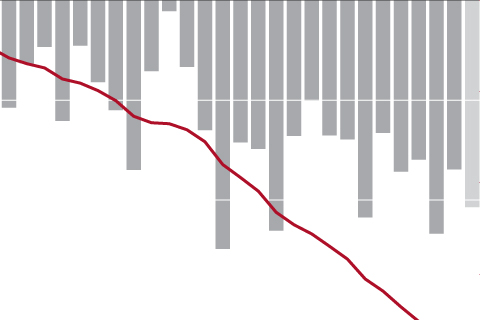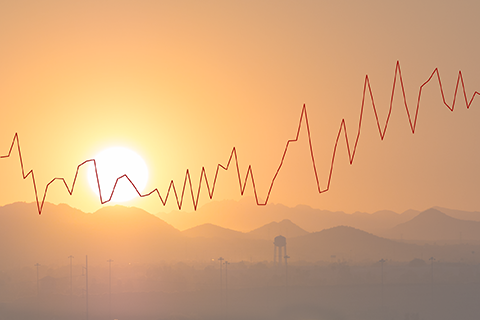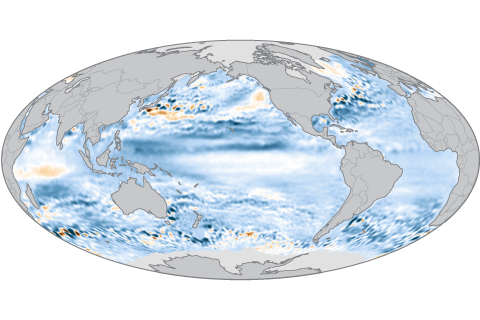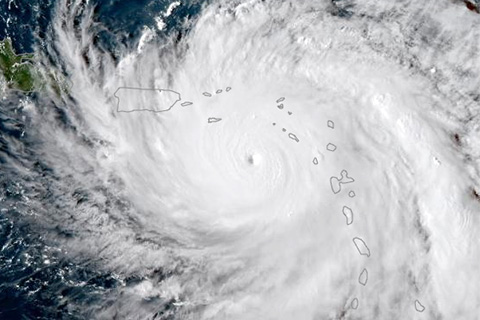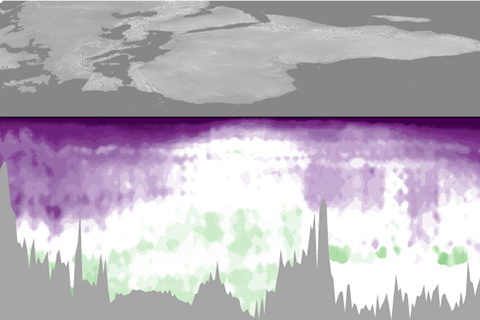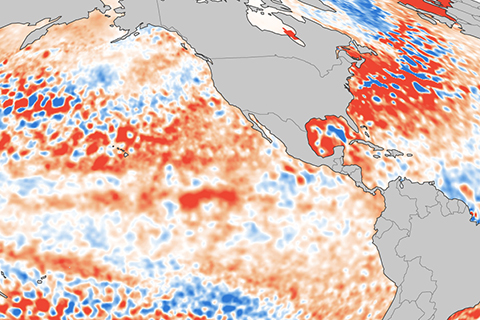
The heating imbalance in Earth's oceans reached a new record high in 2017. From 1993–2017, the ocean has accumulated 0.36–0.40 watts of heat per square meter in the top 700 meters and another 0.19–0.35 watts per square meter at depths between 700–2,000 meters.
